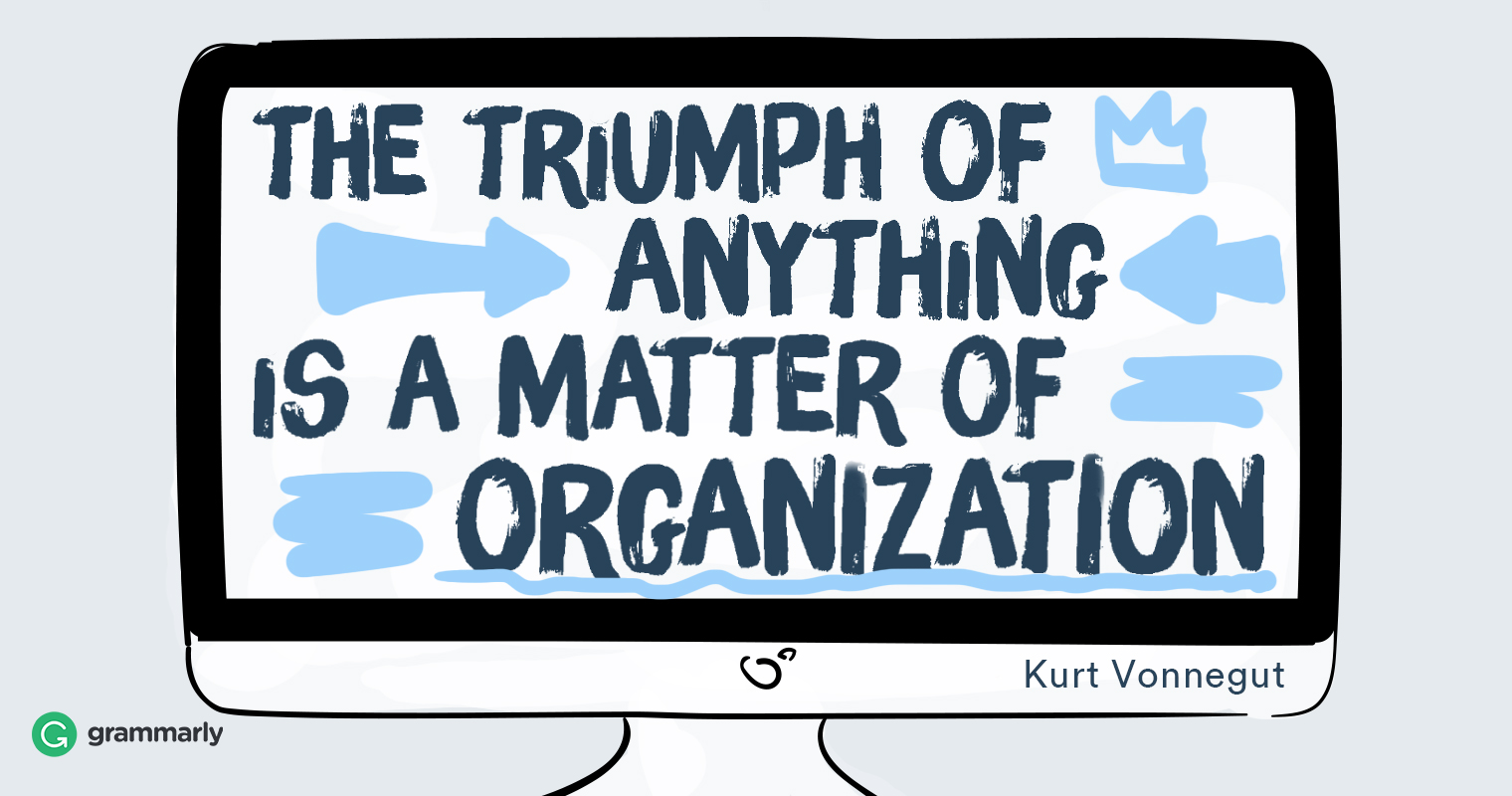
Job hunting is no one’s favorite activity. Customizing your resume and cover letter for each position (not to mention typing the same information found in the resume you just attached into various application systems) can be grueling work. Job hunting is a full-time job, and you’re not getting paid a dime for it.
Getting organized can save you time and make the process less frustrating. Here are six ways to streamline your job search to make it not only easier on you, but potentially more successful.
1Make a list of keywords.
Quick! Can you name all of your job skills in under thirty seconds? If someone asked you what types of positions you’re qualified for, would you be able to rattle them off easily? If so, great—you know how to market yourself well. But if you’re like most job seekers, odds are good that you could benefit from some self-evaluation.
Before you begin your job search in earnest, sit down and make a list of your skills. When I was job hunting, my list included things like writing, editing, communication, and copywriting. Next, focus on the types of positions that might be right for you. Make a list of all the job titles you can think of that would be within the scope of your search.
2Find opportunities with job search alerts.
Now that you have an idea of what you’re looking for, you can start digging into job boards. Many will send you email alerts with new positions that match your skills. Here are a few to help you get rolling.
3Spreadsheets are your friends.
When I was job hunting a few years ago, I found it impossible to keep track of the status of my applications. I wasn’t very spreadsheet savvy, so it never occurred to me to use a free spreadsheet tool like Google Sheets to track my job search efforts.
The good news is you don’t have to be a spreadsheet wizard to use Excel or Sheets. All it takes to create an efficient tracking system is the ability to name a few columns with appropriate headers and then fill in the blanks. (Trust me, it’s easy.) Here are the columns I would use in my search if I had it to do it over again:
- Company – The name of the company you’ve applied to.
- Position – The title of the position you’re interested in.
- Job Listing Link – It can be helpful to have a link to the original job listing so you can refer to it later.
- Application Date
- Contact – If you have a contact name, put it here.
- Email – Add your contact’s email address if you have it.
- Interview Date
- Follow-up – If you scored an interview, this is a good place to note how you followed up.
- Status – Do you have a second interview scheduled? Are you waiting for a response? Track your current status here.
- Comments – This is a good place to add any thoughts or insights you’ve gained as you were researching the company and position. Don’t rely on your memory when you have a lot of job search irons in the fire.
A spreadsheet would’ve saved me a ton of time in my job hunt by preventing me from having to search through various emails and links to remind myself of where I’d applied and what my status was.
4Use a calendar.
If you’re anything like me (the ADHD is strong with this one), you’ve woken up in a cold sweat, your heart racing, thinking Is my job interview this morning? Did I oversleep? Do I have only ten minutes to get ready and race out the door? Oh em gee!
I never missed an interview. I was never late for one, either. But the fear that I might mess up was strong and evoked a near steady state of low-level anxiety. A calendar would have helped alleviate that.
These days, I use Google Calendar, but any calendar app can make the process of tracking upcoming interviews and things like networking events or job fairs much easier. Having a calendar takes the stress out of having to remember upcoming appointments and eliminates those heart-pounding morning wakeups.
5Make a schedule.
As I mentioned earlier, a job search can be like a full-time job in itself, except that it has no pay and no benefits. #SadFace
You can streamline your day by setting a schedule. This was something I did right when I was in the market for a new gig. I stepped into my office at 9 a.m. every weekday. First, I checked my email for any replies from hiring managers. Then, I looked at my new job alerts and checked job boards for any new listings. Next, I focused on putting in applications, which was a more time-consuming process because I was careful to customize each cover letter and tweak each resume.
Think of your job search as a job you’re reporting to each day. Not only will it help you stay committed and on track, it will bring some purpose to your downtime.
6Use templates.
Templates are a time-saver. Make customizable templates for your cover letters (and please do customize each one) and other inquiries and replies. You’ll thank yourself when you’re not writing every single email from scratch. Save templates in Google Docs or another word processing program so you can quickly access them.
Taking a little time to get organized and plan your job search in advance will save you time and prevent irritation and stress. Go get ’em!
The post How to Get Organized During Your Job Search: 6 Helpful Tips appeared first on Grammarly Blog.
from Grammarly Blog
https://www.grammarly.com/blog/get-organized-job-search-6-helpful-tips/
No comments:
Post a Comment